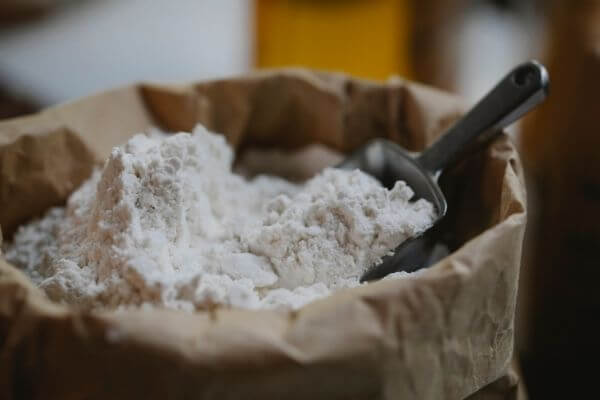When you’re a baker or food manufacturer, it’s important to stay on top of the biggest risks in food safety. Of course, some of the first things that come to mind are foodborne illnesses and the growth of microorganisms. However, there is another risk you don’t want to overlook: pest problems and infestations, including flour beetles.
Flour beetles, in particular, have a habit of tampering with food item ingredients, which can commonly be found in a bakery. The question is, how do you know if you have this type of beetle in your bakery?
Today, we’re going to talk about the five signs you can look out for.
Read on for all of your answers to spotting, eradicating, and preventing flour beetle invasions.
What Are Flour Beetles?
Flour beetles are one of the biggest problem-pests in the food packing industry. These beetles can be found all around the world and tend to gravitate toward grain processing facilities, food warehouses, grocery stores, and bakeries.
These pests are surprisingly resilient and possess a long lifespan. This particular beetle can live for over one year and female flour beetles are known to produce upwards of 450 eggs in their lifetimes. In other words, if a few of these make their way into your bakery, you may have a big problem on your hands in no time.
Why Do Flour Beetles Love Bakeries and What Can You Do About It?
Once you learn what these insects feed on, you’ll better understand why they feel so at home in bakeries and other food-centered businesses.
These beetles feed primarily on grain materials. However, they are not able to penetrate and consume whole, unbroken grains. As a result, they look for pulverized or broken grains, such as broken bits of pasta, or grains that have been reduced to a powdery substance–like flour.
Here are three steps you can take to prevent flour beetles in the first place:
- Inspect all food items and ingredients when they arrive at your business. Look for the telltale signs of beetles, which we will discuss in detail below.
- If your food items and ingredients are bug-free, transfer them to sealed containers, such as airtight jars, rather than leaving them in sacks, bags, or cardboard boxes.
- Make a habit of checking your supplies for early signs of flour beetles. These pests can travel fast from one pantry item to another, so you want to eradicate them ASAP.
Preventing flour beetles can be facilitated by these steps but infestations still happen. So, what are the warning signs of flour beetles?
Warning Signs of Flour Beetles
Sometimes, prevention isn’t an option, or perhaps you’d never heard of these pests until you started to notice something unusual in your food items! Now, you’re wondering if what you’re dealing with is a flour beetle infestation, after all.
Let’s take a look at the five most common signs of flour beetles.
1. Gray Tint in Dried Food Products
Are your ingredients starting to look a little gray around the gills? This is because flour beetles don’t just eat your grains–they live in them. As they undergo their metamorphosis from egg to larvae to adult, they leave behind a gray discoloration that is especially noticeable in light-colored grains like flour.
2. Unusual Odors or Flavors
In addition to changing the color of your food products, flour beetles can also change the smell and taste. Because flour beetles can make their homes inside of your food product containers, you may discover their carcasses and fecal matter tainting your products. The carcasses secrete liquids called quinones that have both a foul smell and taste.
3. Holes in Storage Bags
If you do keep your food products like flour in bags rather than containers, you may start to notice small holes in them. While small holes can indicate other issues, they’re often a telltale sign that flour beetles have chewed their way into your food products.
4. Tainted Food Products in Containers That Appear Sealed
What if you notice the gray tint, foul odors, or unusual flavors in products that seem to be sealed? When food products are stored in sealed cardboard packaging, in particular, you may not realize that flour beetles have gotten inside until you open them. These pests are adept at slipping through small cracks without leaving a trace.
5. Adult Flour Beetle Sightings
One of the most obvious warning signs that you have this type of beetle is the flour beetles themselves. You may notice adult beetles crawling around near your food products or storage spaces.
Red flour beetles are, most notably, reddish in color and have a flat, oval-shaped body. Confused flour beetles, another common flour beetle species, look similar. If you see these beetles milling about or flying short distances in your bakery, it’s a safe bet they’re flour beetles.
How to Tackle Your Flour Beetle Problem Safely
Eradicating pests in a space that handles food can be tricky. Pesticides contain chemicals that aren’t safe for consumption and therefore, aren’t safe to use around food. Plus, these beetles can quickly adapt to pesticides and become resistant to them.
Cryonite, on the other hand, freezes insects using frozen liquid carbon dioxide, killing them on contact. With this non-toxic method, you can begin to eradicate these beetles as soon as you discover them while keeping your business doors open. Cryonite does not pose any health risks and is safe to use on food contact surfaces.
Cryonite is the Key to Your Flour Beetle Problems
Few things are as frustrating as these pests. By using Cryonite, you can quickly eradicate beetles and other insect infestations before they multiply. Protect both the quality and the safety of your food and employees with this safe-to-use flour beetle eradication method. Do you have questions about how to use Cryonite? Take a look at our online user manual to learn everything you need to know or book a call with an expert today.

